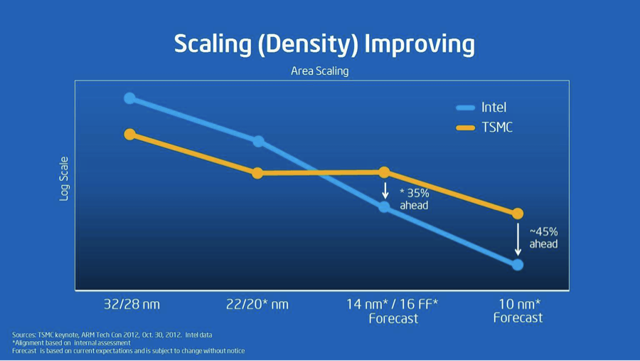IntelUser2000
Elite Member
- Oct 14, 2003
- 8,686
- 3,787
- 136
Looks like Cortex-A15 in the implementations we have any real info on is about 1.5W/core @ 1.7GHz in Exynos 5250 (Samsung 32nm) and 1.3W/core @ 1.8GHz in Exynos Octa (Samsung 28nm). That probably varies tangibly with bins. I don't think it'll need more than 1.2GHz to be competitive with 1GHz Jaguar cores, and it'll probably need substantially less than peak power to reach that.. as I've always been saying we really need actual perf/W curves to really make a valid comparison, you can't just look at peak vs peak when the peaks represent different perf levels.
The real question is how much power the non-core functions consume. Looks like at 1.2GHz the Exynos is using close to 3W for the core, while the 5.9W TDP for Jaguar is basically max power. I'll test Dhrystone out for cpu power use(using HWINFO) both on my IVB Ultrabook and the Clover Trail Tablet(that depends on whether Clover Trail device has enough sensors for that though).
Last edited:





